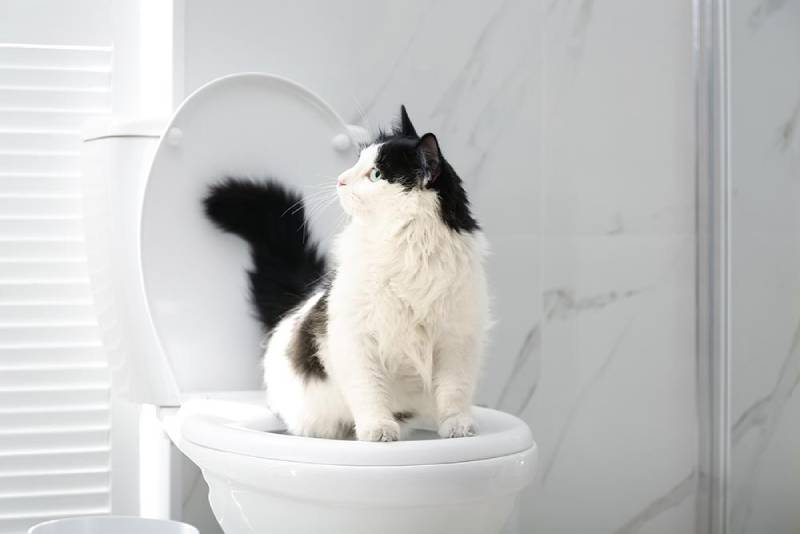Here down the page you will discover lots of very good additional info all about How to Dispose of Cat Poop and Litter Without Plastic Bags.

Intro
As cat owners, it's essential to be mindful of just how we throw away our feline friends' waste. While it may seem practical to flush feline poop down the commode, this method can have destructive repercussions for both the environment and human health and wellness.
Alternatives to Flushing
Fortunately, there are safer and a lot more responsible methods to get rid of cat poop. Consider the following options:
1. Scoop and Dispose in Trash
The most typical method of disposing of feline poop is to scoop it into a naturally degradable bag and throw it in the garbage. Make certain to make use of a devoted clutter scoop and throw away the waste without delay.
2. Use Biodegradable Litter
Go with eco-friendly cat trash made from materials such as corn or wheat. These clutters are eco-friendly and can be safely disposed of in the trash.
3. Hide in the Yard
If you have a backyard, take into consideration hiding pet cat waste in an assigned location far from veggie gardens and water resources. Be sure to dig deep enough to prevent contamination of groundwater.
4. Mount a Pet Waste Disposal System
Invest in a family pet garbage disposal system specifically created for pet cat waste. These systems make use of enzymes to break down the waste, lowering smell and ecological impact.
Health and wellness Risks
Along with ecological worries, flushing cat waste can likewise pose health and wellness dangers to humans. Feline feces might include Toxoplasma gondii, a bloodsucker that can cause toxoplasmosis-- a possibly extreme illness, especially for expecting females and people with weakened immune systems.
Ecological Impact
Purging cat poop presents dangerous microorganisms and parasites into the water, posturing a substantial threat to water ecological communities. These impurities can negatively impact aquatic life and compromise water high quality.
Verdict
Liable pet dog ownership extends past supplying food and shelter-- it also involves appropriate waste management. By avoiding flushing pet cat poop down the bathroom and choosing alternative disposal techniques, we can lessen our ecological footprint and secure human health and wellness.
Why Can’t I Flush Cat Poop?
It Spreads a Parasite
Cats are frequently infected with a parasite called toxoplasma gondii. The parasite causes an infection called toxoplasmosis. It is usually harmless to cats. The parasite only uses cat poop as a host for its eggs. Otherwise, the cat’s immune system usually keeps the infection at low enough levels to maintain its own health. But it does not stop the develop of eggs. These eggs are tiny and surprisingly tough. They may survive for a year before they begin to grow. But that’s the problem.
Our wastewater system is not designed to deal with toxoplasmosis eggs. Instead, most eggs will flush from your toilet into sewers and wastewater management plants. After the sewage is treated for many other harmful things in it, it is typically released into local rivers, lakes, or oceans. Here, the toxoplasmosis eggs can find new hosts, including starfish, crabs, otters, and many other wildlife. For many, this is a significant risk to their health. Toxoplasmosis can also end up infecting water sources that are important for agriculture, which means our deer, pigs, and sheep can get infected too.
Is There Risk to Humans?
There can be a risk to human life from flushing cat poop down the toilet. If you do so, the parasites from your cat’s poop can end up in shellfish, game animals, or livestock. If this meat is then served raw or undercooked, the people who eat it can get sick.
In fact, according to the CDC, 40 million people in the United States are infected with toxoplasma gondii. They get it from exposure to infected seafood, or from some kind of cat poop contamination, like drinking from a stream that is contaminated or touching anything that has come into contact with cat poop. That includes just cleaning a cat litter box.
Most people who get infected with these parasites will not develop any symptoms. However, for pregnant women or for those with compromised immune systems, the parasite can cause severe health problems.
How to Handle Cat Poop
The best way to handle cat poop is actually to clean the box more often. The eggs that the parasite sheds will not become active until one to five days after the cat poops. That means that if you clean daily, you’re much less likely to come into direct contact with infectious eggs.
That said, always dispose of cat poop in the garbage and not down the toilet. Wash your hands before and after you clean the litter box, and bring the bag of poop right outside to your garbage bins.
https://trenchlesssolutionsusa.com/why-cant-i-flush-cat-poop/

Do you really like reading about Don’t flush cat feces down the toilet? Write a remark down the page. We would be pleased to hear your reactions about this page. In hopes to see you back again later on. Liked our posting? Please share it. Help someone else find it. Thanks for your time. Visit again soon.
Visit Page